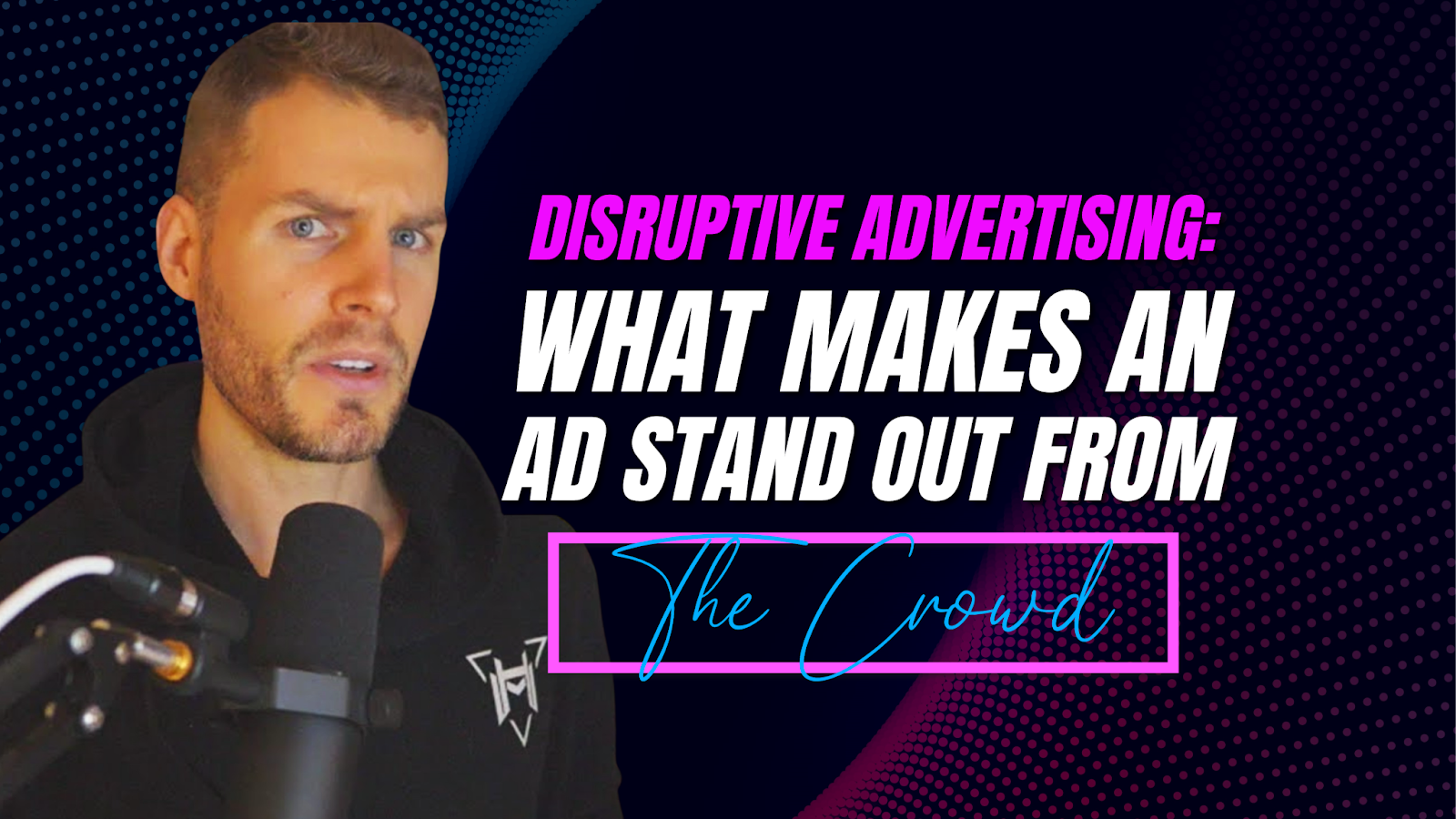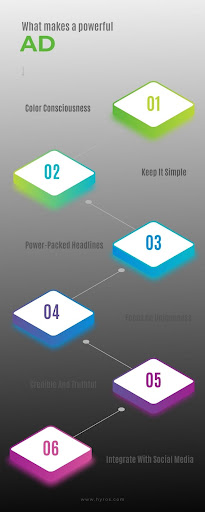
Disruptive Advertising What Makes an Ad Stand Out from the Crowd
Businesses spend around 5%-10% of their total revenue on devising a marketing strategy. Today, the mediums have altered, but the significance of advertising has remained equally imposing. However, the question remains what makes a powerful and capable enough to impact the audience for a long time?
After the introduction of digitization, the world of advertising has invented and adopted several modern-age techniques and methods. Disruptive advertising is one of the most popular and effective advertising types. Yes, you read it right! It is disruptive and not cohesive.
Imagine your favorite film without an antagonist. The story would certainly not be as charming and engaging as it used to be with the dark characters in it. Sometimes we do not realize how critical these negative or disruptive charters remain for carrying on a narrative in an enchanting manner.
However, the experts do realize it. The marketing nerds have simply taken advantage of this subtle psychology of the audience at large to market the products in a novel but predictable way. The underlying idea is simple – the presence of things that are less likely to be there in a certain environment catches human attention effortlessly. This is the objective of disruptive advertising.
It sounds simple, right? But, it is not. Designing a disruptive advertisement effectively can be a challenging task if you do not know the tricks of the trade. While disruptive ads can be attention-grabbing, engaging, and impactful, you need to know the right way to build one. Read on to know more about how to make revenue-generating outstanding marketing plans.
The Final Question – What Makes A Powerful Ad?

1. Color Consciousness
What you see is what shapes your thoughts and impacts your decisions. Therefore, in marketing, colors play a critical role. While devising a design process, advertisers should pay special attention to the age composition of the target audience and the socio-economic background to which they belong.
A palette of colors that is eye-catching for kids might not be equally appealing to older people. However, the application of strikingly different colors can be a simple way to compel onlookers to look at the advertisement more than once.
The use of bright colors such as red, green, blue, and yellow is a smart way to create an indelible impression within a short time. Advertisers should always remember that a static picture gets about a few seconds to impress the audience.
Therefore, the color palette should be magical enough to cast its spell instantly. However, the choice of colors needs to be unusual and strategic. All ads should consider the color psychology factors as they send out some key messages to the viewers. The colors should help in imparting the message appropriately. Got confused? Let’s break it up.
The choice of color should be unconventional, in alignment with the products or services getting advertised, and rightly combined keeping the objective of the campaign in mind. Advertisers may opt for a color picker tool to match the ad design appropriately.
Especially for disruptive ads, which already have unusual elements in them, the choice of colors should be extremely strategic and careful. Yes, disruptive ads work like shock therapy. But, too much of it can ruin the marketing efforts.
2. Keep It Simple
If you are bothered about how to go about disruptive ads, always remember that anything simple always appeals to everyone. When advertising campaigns talk about too many things at the same time things get jumbled up in the audience’s mind.
On the other hand, if the presentation is too complicated, many people find it incomprehensible. Therefore, advertisers should design ads that are minimalistic in approach and deliver an easy-to-remember message.
For disruptive advertisements, the elements that shock the audience when they first catch a glimpse of the ad should be the only thing to put their minds in a state of awe. A complex presentation of the same would only overdo the entire arrangement robbing it of its inherent objective of surprising the audience. Take the case of the Dove ad campaign.
The brand Dove stands for grooming products and yet the makers of the advertisement took a wise call of not involving celebrities or models as the faces of the ad campaign. Instead, they picked women with a varying range of imperfections.
It was unusual to cast common faces in such a big ad campaign but ideal for establishing the emotional appeal. When they saw women from different walks of life and age groups sharing their experiences of using the product, everyone felt represented.
So, the brand gained immense credibility in the market. It was indeed a smart move at that time. The ad did not speak much about the product. It was simply a depiction of how the users felt after using it.
3. Power-Packed Headlines
Powerful headlines are always the most effective headlines. The use of catchy taglines or words offers an emotional touch to the overall presentation of advertisements. Especially, if the product caters to the requirements of the older generations, the word selections for the headline should match the essence of a bygone time to create an appeal.
Is emotion the only element that can catch attention? No! If you are designing an advertisement for younger people, you can also try fear appeals to grab their attention. Let’s take the example of a captivating headline shocking enough to turn heads multiple times.
The advertising headline of a publication house involved in publishing examination books reads “If you do not wish to score High, do not refer to our books”. The first half of the phrase is so unlike any regular ad statement that every reader will read it twice or thrice to understand the message.
Not scoring high in an examination can be a source of fear and the advertisement uses the fear factor to its advantage. This is also a way of emotional branding. Here the advertising agency designs the ad keeping the psychological factors in mind.
4. Focus on Uniqueness
The question,what makes a powerful ad has a simple answer. Unique content always finds its way into the market. If tapping the interest of your brand’s target audience is your objective, make sure to come up with new ideas to impress the crowd. Any advertising agency should focus on the uniqueness of the ad campaigns.
For disruptive ads, the elements of surprise can be various. Generally, these ideas do not match the key messages delivered by other advertisements. However, sometimes several existing, popular video ad campaigns inspire another advertising agency. This is when the design team has to be careful about selecting the image source, exciting graphic elements, etc.
Any resemblance with even a late 1980s popular ad campaign will be a repetition. Impressive ads remain vivid in public memory. Several jingles and video ads become a household mention after a certain time.
Therefore, while delivering your message by drawing inspiration from older sources, any advertising agency needs to be extremely cautious. To the target audience, repetitions remain synonymous with copying. Businesses cannot establish their unique brand value in the market if the first impression goes wrong.
Therefore, no matter your personal favorites, disruptive ad campaigns should be unique and fresh. Otherwise, the advertisement will lose its edge and will fail to take the crowd by surprise.
You can even include mentions of negative elements like air pollution, dangerous territories, or bad reviews to establish your point in a surprising way. But, everything you present should appear fresh and untold.
5. Make Them Credible And Truthful
No matter how shocking or unusual the ad campaign is, if it can deliver the message truthfully and credibly, audiences will love it. An easy way to frame the content on a lighter note can be by using sarcasm or elements of humor in it.
Especially if the advertising agency has picked a sensitive issue like the use of paper bags or paper over plastic, the presentation needs to be less dark. Audiences of any age and social background connect with the humor more universally.
Additionally, when an advertising agency designs an advertisement, reaching the maximum number of audiences remains their sole motive. Entertaining ad content impacts the audience more effectively. Therefore, any advertising agency should consider designing ad campaigns accordingly. All the while, the ad should be true to its message and brand impression.
6. Integrate With Social Media Platforms
No advertising campaign can fetch the intended results today unless an advertising agency integrates the ads with social media platforms. For these platforms, advertisers should design a video that will look perfect on mobile devices.
This is why the appropriate application of graphic design remains critical for such endeavors. From Facebook to Instagram, people from across the world access several social media platforms. Therefore, running a disruptive ad on these platforms would mean being visible to millions of people at the same time.
Additionally, audiences can engage with the ads through comments, hashtags, etc. Sometimes, advertisements that spark debates also remain the central point of discussion on several platforms long after the ad gets removed or replaced.
In short, what makes a powerful ad is its content, presentation, and subject matter.For engraving an advertisement deep into the public memory, disruptive advertising is indeed one of the best advertisement types.
But, the advertising agency should be careful enough in devising one to make sure that it does not repeat an idea or theme with which the audience is familiar. Stay unique, and integrate surprising elements to create head-turning ad campaigns.
